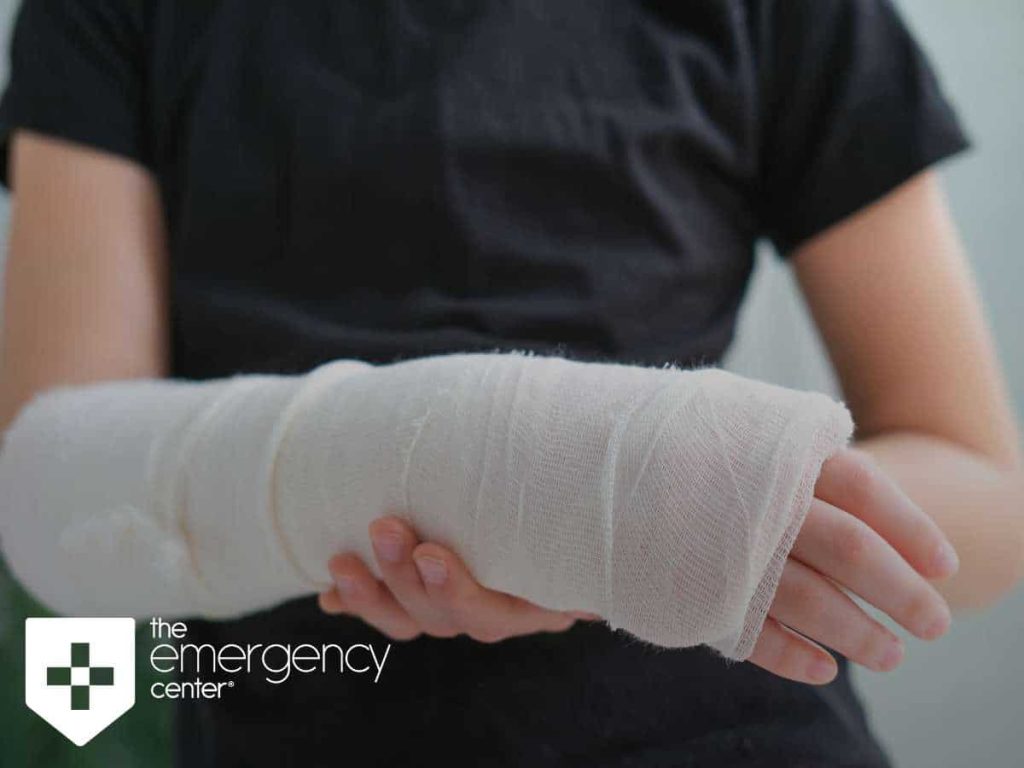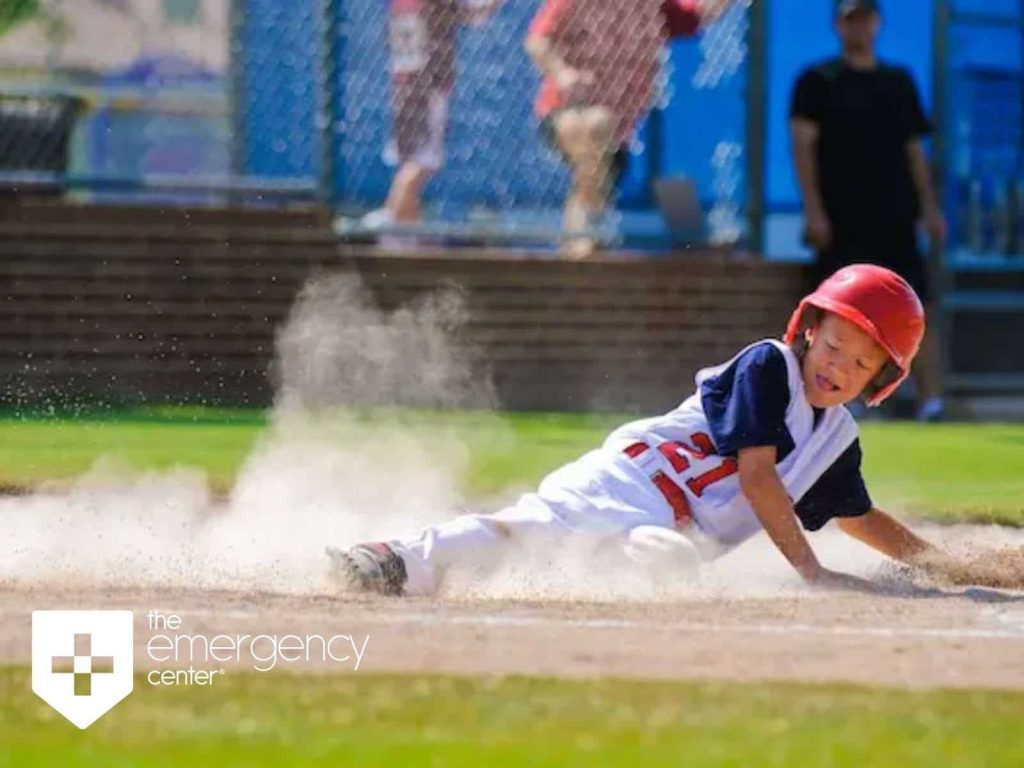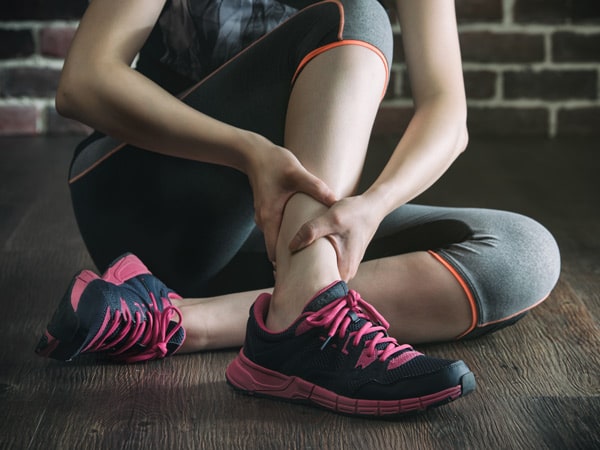Breaks & Sprains
Do You Know The Difference Between Breaks & Sprains?
It is hard to tell the difference between breaks and sprains because the symptoms are so similar, but there are a few distinguishing signs to keep in mind.
What Is a Sprain?
A sprain is when you damage the ligaments (the stretchy bands that hold your bones in place and help keep the joint stable). You usually hear a popping sound with a sprain.
What Is a Break?
A break is a fracture in the continuity of the bone, and you usually hear a cracking sound with a break.
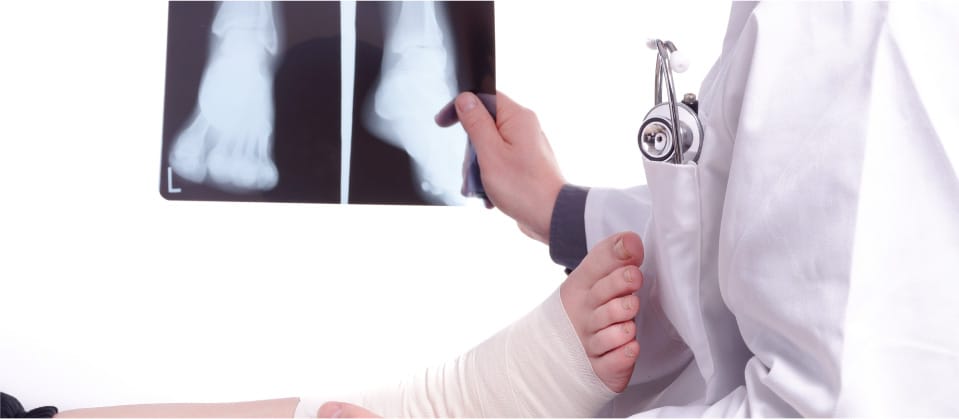
What Are the Distinguishing Signs?
Even though initial symptoms may be similar, bone breaks are often more severe in nature and the recovery time is much longer. See symptoms below:
Symptoms of Bone Breaks
-
Bruising
-
Pain with movement
-
Swelling
-
Tenderness (directly over bone)
-
Limb is in an unnatural position (deformity)
-
Movement in limb where there is no joint
-
Bone protruding from skin
-
Numbness or tingling
-
Unable to use limb
-
Unable to walk
-
Recovery time may take up to 6 weeks to several months
Symptoms of Sprains
-
Bruising
-
Pain with movement
-
Swelling
-
Tenderness (directly over bone)
-
Recovery time is within days
If ever in doubt about the extent of the injury, keep in mind that immediate emergency care is needed if the patient cannot walk more than 4 steps without excruciating pain or if the patient is experiencing numbness and tingling. Rest assured the emergency physician will evaluate the symptoms and the injury, then establish a treatment plan to ensure proper healing.
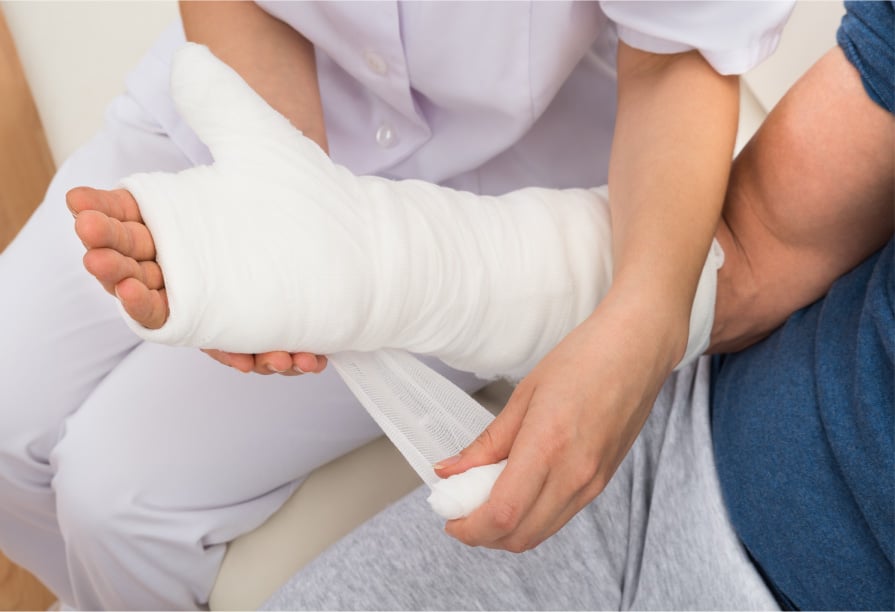
What Can You Do For Breaks and Sprains?
First and foremost, it is important to put the patient AT EASE:
Assess the extent of the injury as best you can.
Treat the injury like a bone break until you can get an x-ray.
Ease the patient’s mind with some tender loving care.
Apply ice (wrapped in a towel) to reduce swelling.
Splint and support injury with pillows and blankets.
Elevate injured part (if possible) to reduce swelling.
What Our Patients are Saying About Us
My visit to the emergency center of San Antonio was amazing. I was seen right away for sciatica pain. Dr. Styskal was amazing. I was treated right away and sent home with my medication. I wish more facilities would practice this without you having to make an additional stop at a pharmacy for medication. I know five stars is the highest I can give but they deserve 100+ stars.
Lizette M. ★★★★★
I was skeptical about going to the Emergency room, because for me ER’s have a bad reputation. My experience here was one of the best experience I’ve ever had. Keith at the front desk was very nice and went above and beyond for me. I forget my insurance card and wanted to know how much my co pay would be. He looked me up with no issue, brought my a wheelchair to ease my pain, as well as started
Mecia T. ★★★★★
My first time coming here, was greeted immediately by Keith and Debbie and helped. When in the back, Nichole wasted no time getting my vitals, checking on how I was feeling, and was super friendly and comforting while doing so. Dr. Erdner was very nice, and informative. Johnny got my CT scan quickly and made the process easy, and fast. All together the staff made my visit a great experience.
Nicole D. ★★★★★
Get Directions To Visit Us
Alamo Ranch
Conroe

